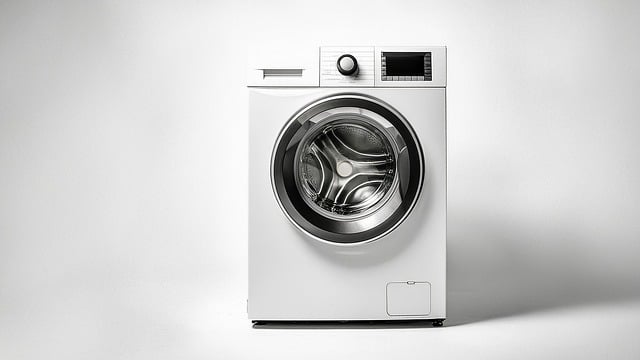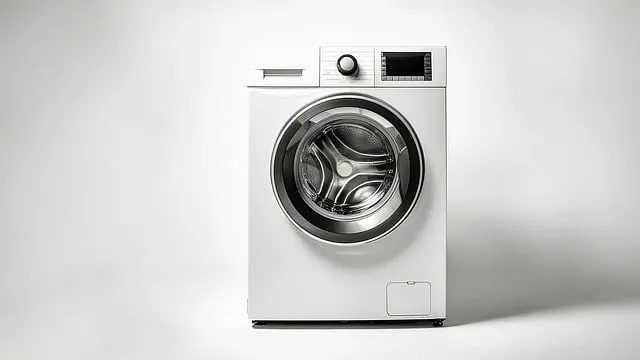What’s the Impact of Overloading on Dryer Energy Efficiency?
When you stuff your dryer to the brim, you’re not just creating a tight squeeze; you’re also making it work harder than it should. The dryer has to spend extra time and energy trying to dry everything evenly. Think of it as a marathon runner with a backpack full of bricks—exhausting and less efficient. This extra effort translates to increased energy consumption, which not only spikes your electricity bill but also wears down your dryer faster.
In addition, overloading can lead to uneven drying. Clothes get bunched up, and the heat can’t circulate properly. This means some clothes come out damp while others are over-dried. It’s like trying to cook a giant pot of soup with a tiny stove—you’re bound to end up with a messy outcome. This uneven drying forces you to run multiple cycles, further wasting energy and increasing your costs.
Moreover, overloading can strain your dryer’s components. The extra weight puts pressure on the drum and motor, leading to potential breakdowns or repairs. It’s akin to driving a car with a faulty engine; it might run for a while, but eventually, the strain will catch up.
So, while it might seem like a time-saver to cram in as much laundry as possible, it’s really a false economy. The long-term impact of overloading your dryer on energy efficiency can be both costly and damaging. It’s better to give your dryer a bit of breathing room, ensuring it operates smoothly and efficiently.
Overloading Your Dryer? How It Drains Your Energy Efficiency
Imagine your dryer as a hardworking team member. When overloaded, it’s like asking that team member to handle twice the work without extra help. The dryer has to work much harder to get your clothes dry, which means it uses more energy than necessary. It’s not just about taking longer to dry; it’s about using up more electricity and costing you more on your utility bill.
A dryer that’s stuffed to the brim can’t circulate air properly. This lack of airflow means that the dryer has to keep running to try and get all those clothes dry, resulting in increased energy consumption. It’s a bit like trying to bake a cake in an overcrowded oven—the heat just doesn’t distribute evenly, and you end up with a less-than-perfect result.
Additionally, overloading can strain the dryer’s components, leading to potential breakdowns or the need for costly repairs. It’s like pushing your car to its limits all the time; eventually, something’s going to give.
So, next time you’re tempted to throw in that extra load, remember that a well-balanced dryer is a more efficient dryer. You’ll save energy, reduce wear and tear on your appliance, and keep your clothes looking their best. Plus, who doesn’t want to save a few bucks on their energy bill?
Is Your Dryer Losing Power? The Hidden Cost of Overloading
Imagine stuffing a suitcase to the brim and trying to zip it up – it’s a tight squeeze, right? That’s exactly what happens to your dryer when you cram in too many clothes. Overloading not only makes the dryer work harder, but it also puts undue stress on its components. When the machine is pushed beyond its limits, it can lead to increased wear and tear, affecting its performance and lifespan.
But wait, there’s more. Overloading can cause uneven drying, which means you’ll end up running multiple cycles to get your clothes fully dry. This extra time and energy not only rack up your utility bills but can also lead to higher repair costs down the road. Think of it like this: overloading is like driving a car with a heavy load up a steep hill – it’s going to strain the engine and reduce its efficiency.
Plus, if your dryer is struggling, it might not be drying your clothes evenly. This can result in damp spots and potential mold issues if clothes stay wet for too long. So, while it might seem like you’re saving time by throwing in an extra load, you’re actually setting yourself up for a dryer disaster.
In essence, giving your dryer a break and loading it according to its capacity is a small change that can prevent big headaches. It’s all about keeping your appliance happy and running smoothly for the long haul.
The True Cost of Overloading: What It Means for Your Dryer’s Energy Bills
Imagine your dryer as a marathon runner. If you keep cramming more and more into their workout, they’re going to get exhausted faster. When your dryer is overloaded, it has to work harder and longer to dry your clothes, which means it’s using more energy. And guess what? That extra effort doesn’t come free. The more energy your dryer uses, the higher your energy bills will climb.
Think of it like this: overloading your dryer is like driving your car with the engine revved up constantly. Just as your car would burn more fuel and wear out faster under those conditions, your dryer uses up more electricity and faces increased wear and tear. The result? A hefty increase in your energy costs and potentially more frequent repair bills.
Moreover, overloaded dryers often struggle to distribute heat evenly, which can lead to uneven drying. That’s why you might find some clothes damp while others are over-dried. The dryer’s inefficient performance not only wastes energy but also forces you to run extra cycles, further boosting your energy bills.
So next time you’re tempted to fit in just one more load, remember: the true cost of overloading goes beyond just a higher electric bill. It’s about extending the life of your dryer and keeping those energy costs in check. After all, a little restraint now can lead to big savings later!
How Overloading Your Dryer Can Sabotage Energy Savings and Efficiency
When you jam too many clothes into your dryer, you’re not just cramming in laundry; you’re creating a recipe for disaster. The dryer has to work harder to get everything dry, which means it’s using more energy. Imagine trying to heat a room with a tiny heater but expecting it to warm up a mansion. It’s not only inefficient but also a waste of energy and money.
Moreover, overloading can lead to uneven drying. Some clothes might come out damp, requiring you to run another cycle. This is like filling a pot to the brim with soup and then having to cook it longer because there’s too much to handle at once. The result? Extra energy spent and more wear and tear on your machine.
Let’s not forget about the mechanical strain. Overloading puts undue stress on the dryer’s motor and components, which can lead to breakdowns or reduced lifespan. Think of it as putting a car engine through a marathon without a proper tune-up—it’s bound to cause issues.
So, the next time you’re tempted to shove in that extra load, think twice. You might be saving time, but you’re likely paying more in energy and repair costs in the long run. Balance is key, and treating your dryer with a bit of care can make a huge difference in keeping your energy bills in check and your dryer running smoothly.
Dryer Overload: The Silent Energy Efficiency Killer You Need to Know About
Dryer overload happens when you cram more clothes into your dryer than it can handle efficiently. Sure, it might seem like a good way to save time, but it’s actually a recipe for disaster—both for your clothes and your wallet. When you overload your dryer, it has to work harder to tumble those clothes, leading to longer drying times. This not only increases your energy consumption but also puts unnecessary strain on the dryer’s motor and other components.

Think of it this way: When your dryer is overloaded, it’s like trying to cook a giant feast in a tiny kitchen. The oven gets overworked, the food doesn’t cook evenly, and you end up using more energy and time. In the case of your dryer, the result is that your clothes come out damp, and the machine uses more electricity to get them fully dry. This extra energy use directly impacts your utility bills, making dryer overload a silent but costly energy efficiency killer.
Moreover, overloading can lead to premature wear and tear on your dryer, potentially causing more expensive repairs down the line. It’s a bit like pushing your car to its limits—you might get away with it for a while, but eventually, something’s going to give.

So, next time you’re about to shove a mountain of laundry into your dryer, remember: less is more. Your dryer—and your energy bill—will thank you for it.

